When the air turns crisp and snowflakes begin to fall, there’s nothing quite like gathering around with friends and family for some mental stimulation. Winter riddles offer the perfect opportunity to exercise our brains while celebrating the magic of the season.
We’ve compiled a collection of the most enchanting winter riddles that’ll challenge minds of all ages. From icy brain teasers to snowy wordplay, these riddles capture the essence of winter wonderlands while providing hours of entertainment during those long, cold evenings. Ready to put your thinking cap on and embrace the intellectual side of the season?
10 Challenging Winter Riddles to Test Your Seasonal Smarts
Ready to put your winter knowledge to the test? We’ve compiled ten brain-teasing winter riddles that will challenge even the sharpest minds. These aren’t your average easy riddles – they’ll require you to think creatively about winter elements, holiday traditions, and seasonal phenomena. Let’s see how many you can solve!
- I’m made of water but solid as stone, I’ll melt in the heat but I’m cold to the bone. What am I?
Ice forms the foundation of winter landscapes yet disappears with warmth. This fundamental winter element transforms lakes, creates dangerous driving conditions, and enables popular winter sports.
- People buy me to eat, but never eat me. What am I?
A plate serves holiday feasts throughout winter celebrations without being consumed itself. Families worldwide place their festive meals on these essential tableware items during special winter gatherings.
- I’m white and powdery, I fall from the sky, I’m loved by children and make adults sigh. What am I?
Snow blankets the earth in pristine white during winter months. Children build snowmen and engage in snowball fights while adults often face the task of shoveling driveways and handling slippery roads.
- I grow when cold and shrink when hot, I can be crystal clear or cloudy white. What am I?
Breath becomes visible in cold winter air as water vapor condenses instantly. This everyday winter phenomenon occurs whenever warm breath meets freezing temperatures.
- I’m round as a button and flat as a board, I’m the color of snow and valued by all. What am I?
A snowflake contains intricate crystal patterns uniquely formed in the atmosphere. Scientists have documented countless variations, yet no two snowflakes are exactly alike.
- I have branches yet no fruit, trunk but no treasure, leaves but no pages. In winter, I might wear a white coat. What am I?
A tree stands bare during winter months after shedding its leaves in autumn. Evergreen varieties remain green while deciduous trees await spring to regrow their foliage.
- Born in winter, die in summer, never walk or run, but continually growing taller. What am I?
An icicle forms when water drips and freezes in cold temperatures. These beautiful winter formations hang from rooftops, tree branches, and other surfaces until warmer weather arrives.
- I shield you from winter’s chill but have no warmth of my own. You wear me outside but take me off indoors. What am I?
A coat provides essential protection against freezing temperatures and harsh winter elements. Modern winter coats use advanced insulating materials to trap body heat effectively.
- I’m a season of joy yet darkness reigns, when family gathers and nature wanes. What am I?
Winter brings the shortest days and longest nights of the year in the Northern Hemisphere. Even though limited daylight, this season hosts many holidays that bring people together.
- Silent as a shadow, I dance across the night sky. Colorful and bright, I’m a winter delight. What am I?
The Northern Lights (Aurora Borealis) illuminate winter skies in polar regions with spectacular color displays. This natural phenomenon results from solar particles interacting with Earth’s magnetic field.
How many did you solve? These winter riddles challenge your thinking while celebrating the unique aspects of the season. Share them with friends and family during your next winter gathering to create memorable moments of fun and friendly competition.
15 Frosty Riddles Perfect for Winter Classroom Activities

- I bring snowflakes and chilly air, I make you bundle up with care.
Answer: Winter - I come when the days are short and cold, with frosty mornings and nights so bold.
Answer: Winter - I make the trees sparkle with ice, and bring snow that’s oh so nice.
Answer: Winter - You’ll see snowflakes when I appear, with chilly winds that bring the year’s cheer.
Answer: Winter - I cover the industry in a blanket so white, with scarves and mittens, you hold on tight.
Answer: Snow/Winter - What is both white and cold but melts in the sun?
Answer: A snowman - What do snowmen eat for breakfast?
Answer: Frosted Flakes - If you’re cold, where should you sit?
Answer: Beside the fire - I’m always hungry, I must always be fed. The finger I touch will turn red.
Answer: Fire - What starts with an E, ends with an E, but only contains one letter?
Answer: An envelope - I fall from the sky, but I’m not rain. I’m tiny and cold. What am I?
Answer: Snowflake - I’m a season of rest, when bears sleep best. What am I?
Answer: Winter - I’m a house made of ice, but I’m not an igloo. What am I?
Answer: Snow globe - I’m a ball that’s thrown but never caught. What am I?
Answer: Snowball - I’m a winter sport played on ice with stones. What am I?
Answer: Curling
Easy Winter Riddles for Elementary Students
Captivating young learners with winter-themed riddles creates an exciting atmosphere while reinforcing seasonal vocabulary. Visual aids like I Spy scenes work wonderfully to help students learn and remember terms such as snowman, mittens, and icicles. Students can practice descriptive language through fun activities when these riddles are paired with seasonal bingo cards or scavenger hunts.
Try these simple riddles with your elementary students:
- “I’m a frozen treat on a stick. What am I?” (Answer: Icicle)
- “I’m a bird that stays all winter. What am I?” (Answer: Cardinal)
Challenging Winter Brain Teasers for Middle Schoolers
Middle school students will love tackling more complex winter-themed brain teasers that stimulate critical thinking skills. Math integration becomes possible through riddle-based escape rooms where students solve fraction and decimal conversions or work through seasonal logic puzzles.
- “I fall but never land. I glisten but never sparkle. What am I?” (Answer: Snowfall)
- “I’m a wall of ice that moves very slowly. What am I?” (Answer: Glacier)
12 Snow-Themed Riddles That Will Leave You Puzzled
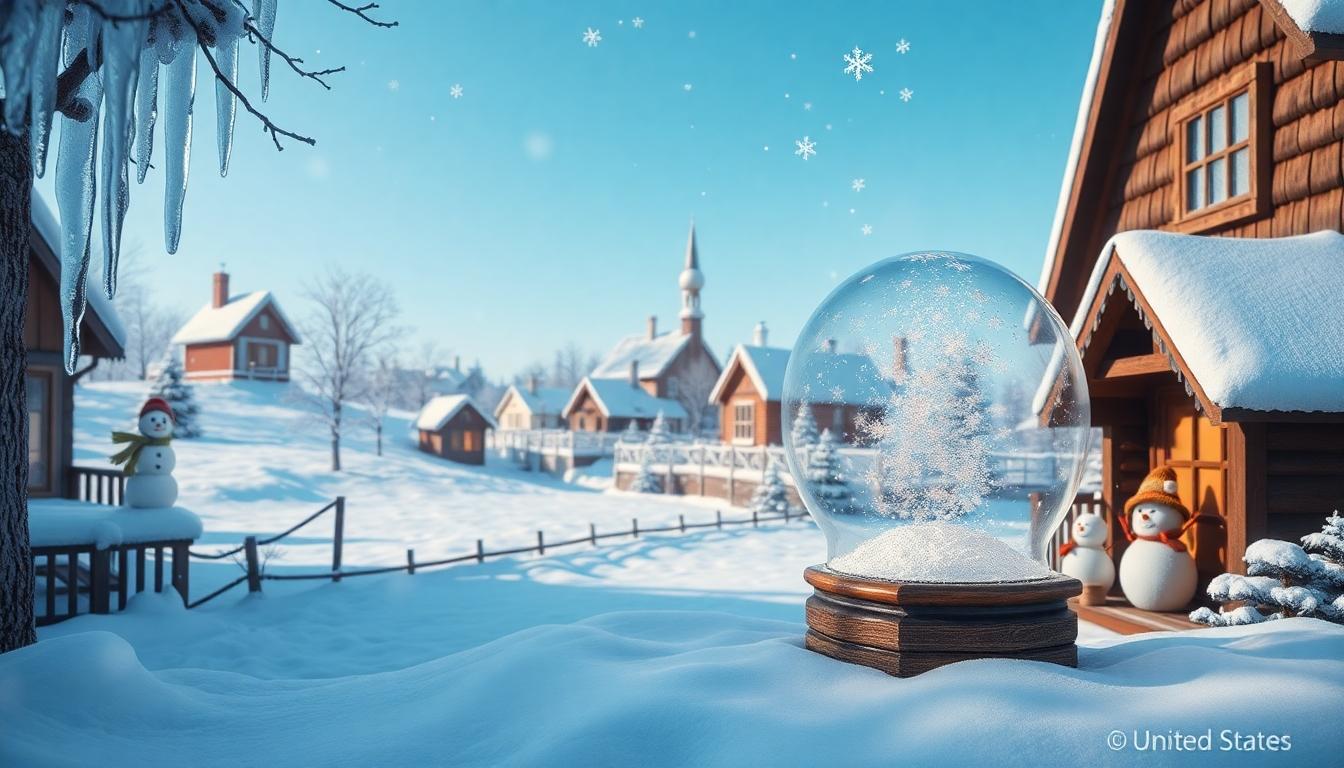
Ready to test your winter wit? These snow-themed riddles will challenge your brain while celebrating the frosty season.
- “I walk without legs, I’m cold as can be. I melt when it’s sunny, so who could I be?” – Answer: Snow
- “I drop from the sky far more beautifully than rain. There are no two pieces that’ll ever look the same.” – Answer: Snow
- “I cover the ground in a soft white sheet, but step on me, and I’ll melt with your feet.” – Answer: Snow
- “I can drift, lift, swirl, and fall; but only in the winter or not at all.” – Answer: Snowflake
- “I’m unique and light, I fall from the sky. Catch me on your tongue as I pass by.” – Answer: Snowflake
- “I was known to Greek philosophers a thousand years ago; I have numbers all in a line.” – Answer: Thermometer
- “You can hold me and even shake me, but I’m easy to break. I have lots of snow, but it’s all fake!” – Answer: Snow globe
- “I can be round, white, and shaped like a ball, yet I cannot be dribbled or bounced at all.” – Answer: Snowball
- “Hanging from rooftops, I shimmer and gleam; I’m cold and sharp, like a wintery dream.” – Answer: Icicles
- “I draw on windows with patterns of white, a wintery artist who works at night.” – Answer: Frost
- “What is as cold as ice but weighs nothing?” – Answer: Snowflake
- “What falls but never breaks? What breaks but never falls?” – Answer: Night falls, day breaks
Snowman Riddles That Will Melt Your Brain
Snowman riddles offer a delightful challenge for winter enthusiasts of all ages. Try solving these clever brain teasers about everyone’s favorite frozen friend!
- “What do snowmen wear on their heads?” – Answer: Ice caps
- “I have arms but no hands, a neck but no head. I’m often found warming you instead.” – Answer: Coat/scarf
- “I’m made of snow, with coal for eyes. Add a carrot nose, and I’ll rise!” – Answer: Snowman
Snowflake Riddles That Are Uniquely Challenging
Just like actual snowflakes, these riddles are one of a kind and sure to provide a special kind of mental challenge. Each riddle captures the magical essence of winter’s most delicate creation.
- “I can get big, but I’m usually small. I have a million siblings, but we never look the same.” – Answer: Snowflake
- “What kind of crystals don’t break when they hit the ground?” – Answer: Snow (ice crystals)
8 Icy Cold Riddles to Warm Up Your Mind This Winter
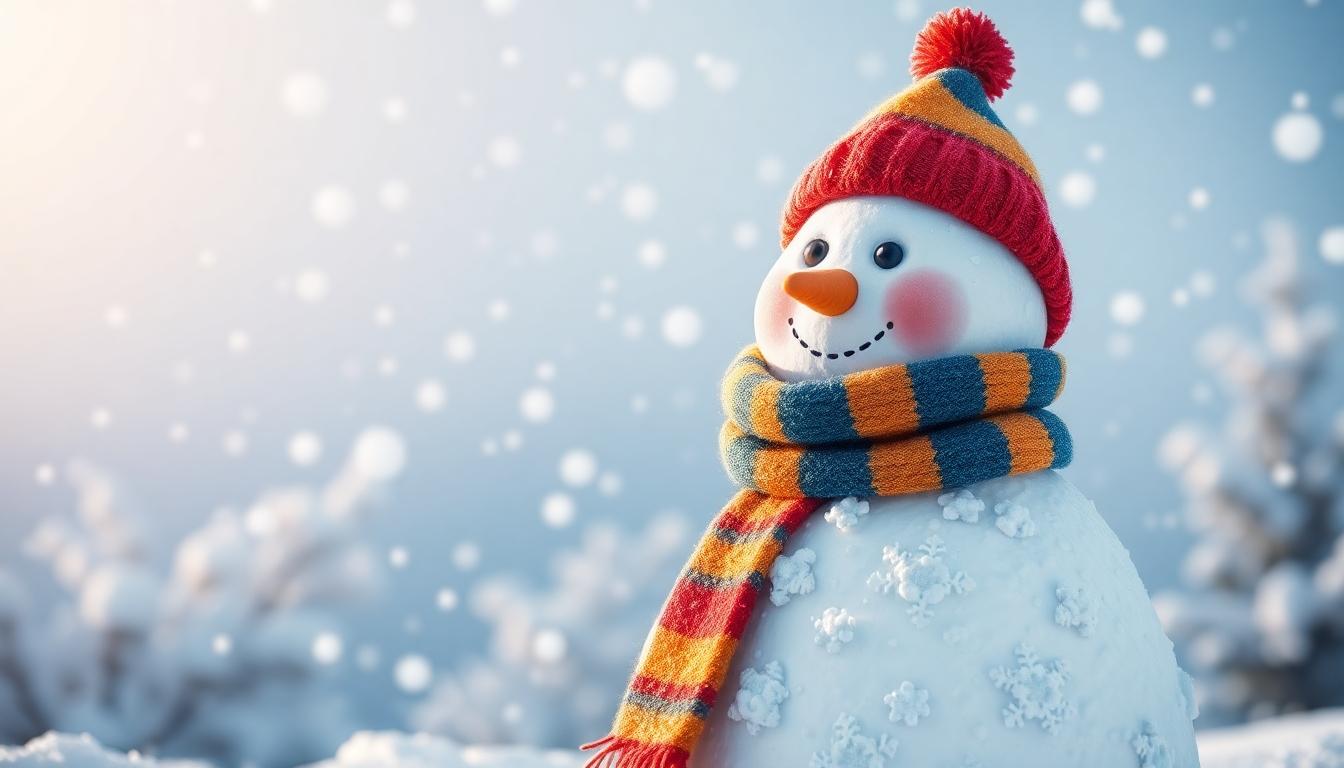
Ready to challenge your brain with some winter-themed brain teasers? We’ve gathered eight delightfully frosty riddles that will give your mind a workout while celebrating the wonders of the winter season.
- The Weightless Chill
What is as cold as ice but weighs nothing? If you guessed a snowflake, you’re correct! These intricate ice crystals float effortlessly from the sky yet bring a distinct chill.
- The Natural Cycle
What falls but never breaks? What breaks but never falls? The answer is night falls and day breaks. This clever wordplay reminds us of winter’s shorter days and longer nights.
- The Melting Mystery
I walk without legs, I’m cold as can be. I melt when it’s sunny, so who could I be? A snowman, of course! These beloved winter creations stand tall until warmer weather comes along.
- The Cozy Conundrum
I have arms but no hands, a neck but no head. I’m often found warming you instead. This winter essential is a scarf, wrapping snugly around your neck to keep the cold at bay.
- The Ground Cover
I cover the ground in a soft white sheet, but step on me, and I’ll melt with your feet. Snow transforms our industry into a winter wonderland while leaving footprints behind with each step.
- The Winter Vehicle
I’m a winter vehicle that goes vroom; over the snow, I zoom. What am I? A snowmobile lets winter enthusiasts traverse snowy terrain with speed and excitement.
- The Seasonal Footwear
I’m common winter footwear, to keep your toes warm everywhere. What am I? Boots protect our feet from cold temperatures and wet conditions throughout the winter months.
- The Road Hazard
I form on roads, thin and clear, causing cars to slide in fear. What am I? Black ice presents one of winter’s most dangerous driving challenges due to its nearly invisible nature.
20 Winter Holiday Riddles for Family Gatherings

Ready to bring some extra cheer to your holiday gatherings? These winter riddles are perfect for entertaining family members of all ages during your festive celebrations.
- “I come with many colors, very big and bright, I turn so many houses into a beautiful sight. What am I?” (Christmas lights)
- “If you hear me at night, you better get to sleep because I’m attached to Santa’s sleigh. What am I?” (Jingle bells)
- “During this winter holiday, many people enjoy sledding and building snowmen. What is the holiday?” (Christmas)
- “What do you call a vampire when he gets stuck in the snow?” (Frostbite)
- “What does a snowman eat for a snack?” (Snow cones)
- “This ring is made of leaves, flowers, fruits, twigs, and more. At wintertime, it hangs on your front door. What could it be?” (A Christmas wreath)
Christmas-Themed Winter Riddles
- “Which one of Santa’s reindeer can you see from outer space?” (Comet)
- “Where do elves go to vote?” (The north poll)
- “What laundry detergent do people in the North Pole use?” (Yule Tide)
- “Who gives presents to baby sharks?” (Santa Jaws)
- “I’m a plant seen at Christmas that people hang above. And then they stand beneath me, and kiss someone they love. What am I?” (Mistletoe)
- “Where does Santa put his suit after Christmas?” (In his Claus-et)
- “What did Santa say when he arrived back home?” (“Ho ho home!”)
- “How does Santa feel when he’s stuck in a chimney?” (Claus-trophobic)
New Year’s Riddles to Ring in the Season
- “I’m a bank, but I don’t have any money. What am I?” (A snowbank)
- “Where did Santa Claus go for vacation?” (Santa Cruz)
- “What do you call a snowman in July?” (A puddle)
- “What type of fruit do you eat at Christmas that isn’t very healthy?” (Fruitcake)
- “Which of Santa’s reindeer will you find on Valentine’s Day?” (Cupid)
7 Winter Sports Riddles for the Athletic Puzzler
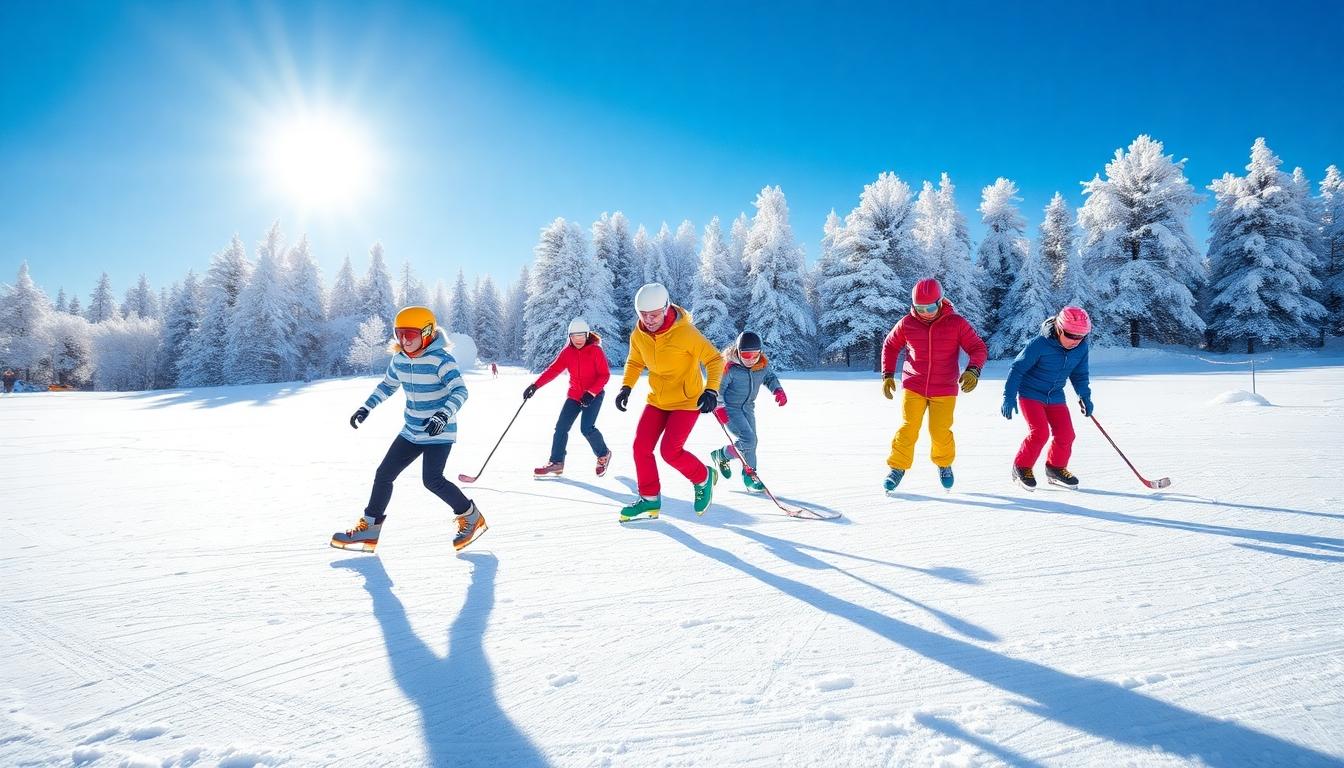
For sports enthusiasts who love winter activities, we’ve compiled a collection of brain-teasing riddles that celebrate cold-weather athletics. These sports-themed puzzles will challenge your knowledge of winter competitions while providing entertainment during the chilly season.
- My blades are long and my strides are fast, I circle that track and try to outlast. What am I?
Speed skaters glide across ice with impressive velocity, using specialized long blades to achieve maximum efficiency while racing around oval tracks. Their distinctive crouched position and rhythmic movements make this winter Olympic sport both graceful and thrilling to watch.
- What do you call a snowman on skis?
A muddy puppy! This playful riddle uses unexpected humor to create a fun mental image of what happens when a snowman attempts to hit the slopes. The contrast between the pristine white snow figure and the muddy result creates a clever punchline that kids especially enjoy.
- I’m a fast-paced winter sport played on ice with sticks and a puck. What am I?
Ice hockey combines speed, skill, and strategy as players race across the rink wielding sticks to control a small rubber puck. Teams battle for possession while attempting to score goals, making this high-energy sport a winter staple in many northern countries.
- I’m a flat board used to surf on snow. What am I?
Snowboarding transformed winter recreation when it emerged as an alternative to traditional skiing. Riders strap both feet to a single board and carve down mountainsides, performing tricks and jumps that blend elements of surfing and skateboarding in snowy terrain.
- I’m something that you throw in winter but never in summer. What am I?
Snowballs provide simple winter joy through their unique seasonal availability. People of all ages gather snow in their mittened hands, pack it into spheres, and engage in friendly battles that create lasting memories during the coldest months of the year.
- Figure skating, luge, and ski jump too, Bobsled and hockey are other events I debuted. What am I?
The Winter Olympics brings together elite athletes from around the industry to compete in various cold-weather sports. This prestigious international event showcases everything from artistic performances on ice to death-defying descents down snow-covered mountains, uniting countries through athletic excellence.
- I make trees sparkle but I’m not lights. What am I?
Frost transforms ordinary landscapes into glistening winter wonderlands by coating trees and plants with delicate ice crystals. This natural phenomenon creates a magical environment for outdoor winter sports, adding visual beauty to activities like cross-country skiing through frosted forests.
5 Scientific Winter Riddles That Explain Cold Weather Phenomena
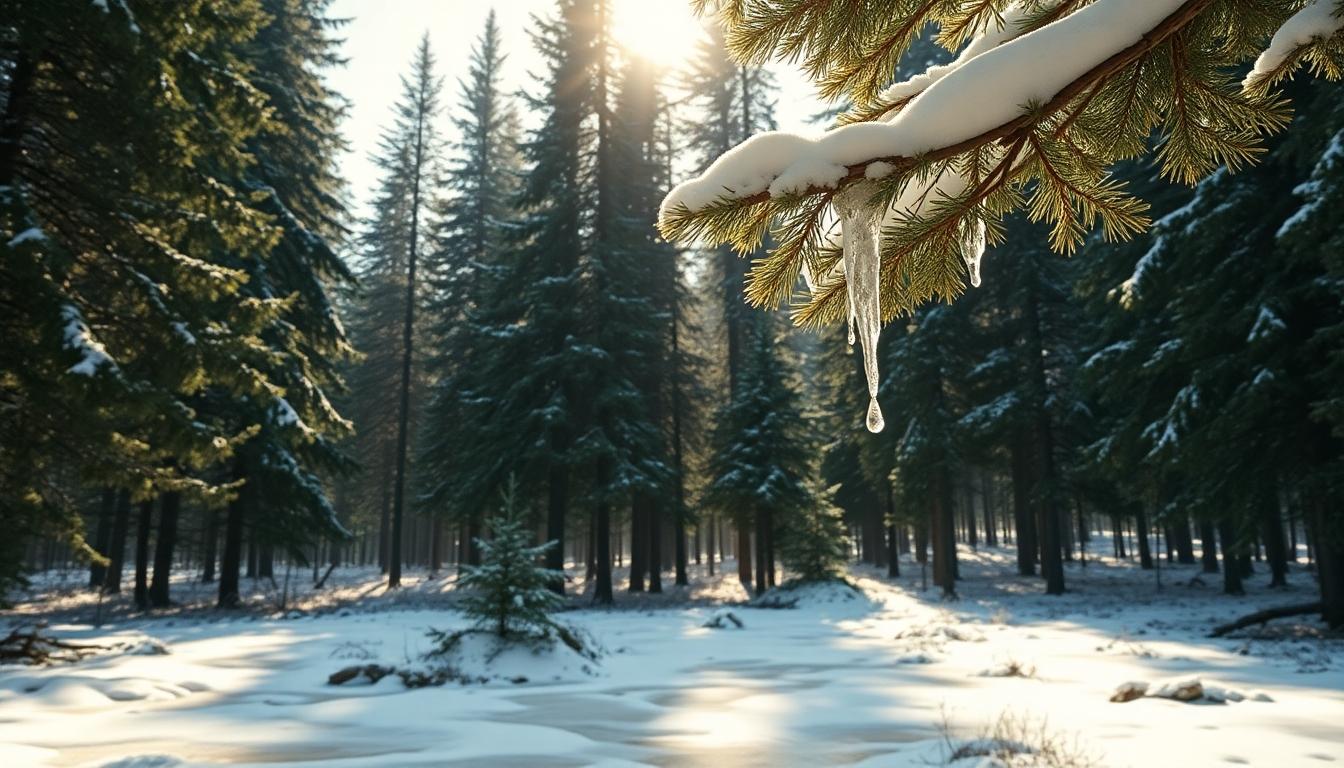
The Mpemba Effect Riddle
What freezes faster, hot water or cold water? The answer might surprise you! Hot water can sometimes freeze faster than cold water, a phenomenon known as the Mpemba effect. Scientists still haven’t fully explained this counterintuitive occurrence, though it’s regularly observed in experiments. This fascinating paradox challenges our basic understanding of thermodynamics and continues to puzzle researchers worldwide.
The Forest Snow Mystery
Why are forests not covered in snow like open fields? Forests create their own microclimate that acts as a buffer against cold air. Trees retain warmth and insulate the ground beneath them, preventing snow from accumulating as heavily as it does in open areas. The darker surfaces of trees also absorb whatever heat is available from the winter sun, creating slightly warmer conditions within the forest network compared to exposed fields nearby.
The Disappearing Forest Snow Riddle
What happens to snow that falls on forested areas? Snow that lands on forests gradually melts due to the warmth absorbed by trees. This melted snow then drips down into the soil, maintaining moisture levels throughout the winter months. Unlike in open fields where snow can remain for extended periods, forest environments process precipitation differently thanks to their unique thermal properties.
The Winter Absorption Puzzle
What type of surface absorbs more heat from sunlight during winter? Dark surfaces, particularly those found in forests, absorb significantly more heat due to what scientists call the albedo effect. This phenomenon describes how darker surfaces can absorb more solar radiation while lighter surfaces reflect it away. Forest elements like tree trunks and exposed soil take advantage of what little warmth the winter sun provides, creating small but important temperature differences.
The Glacier Formation Riddle
Why do glaciers form in exact regions? Glaciers develop in areas where snow consistently falls but never fully melts during warmer months. This persistent accumulation allows layers of ice to build up over time as snow compacts under its own weight. The combination of cold temperatures and lack of seasonal melting enables these massive ice formations to grow year after year, eventually becoming the flowing rivers of ice we recognize as glaciers.
The Ultimate Collection of Winter Animal Riddles
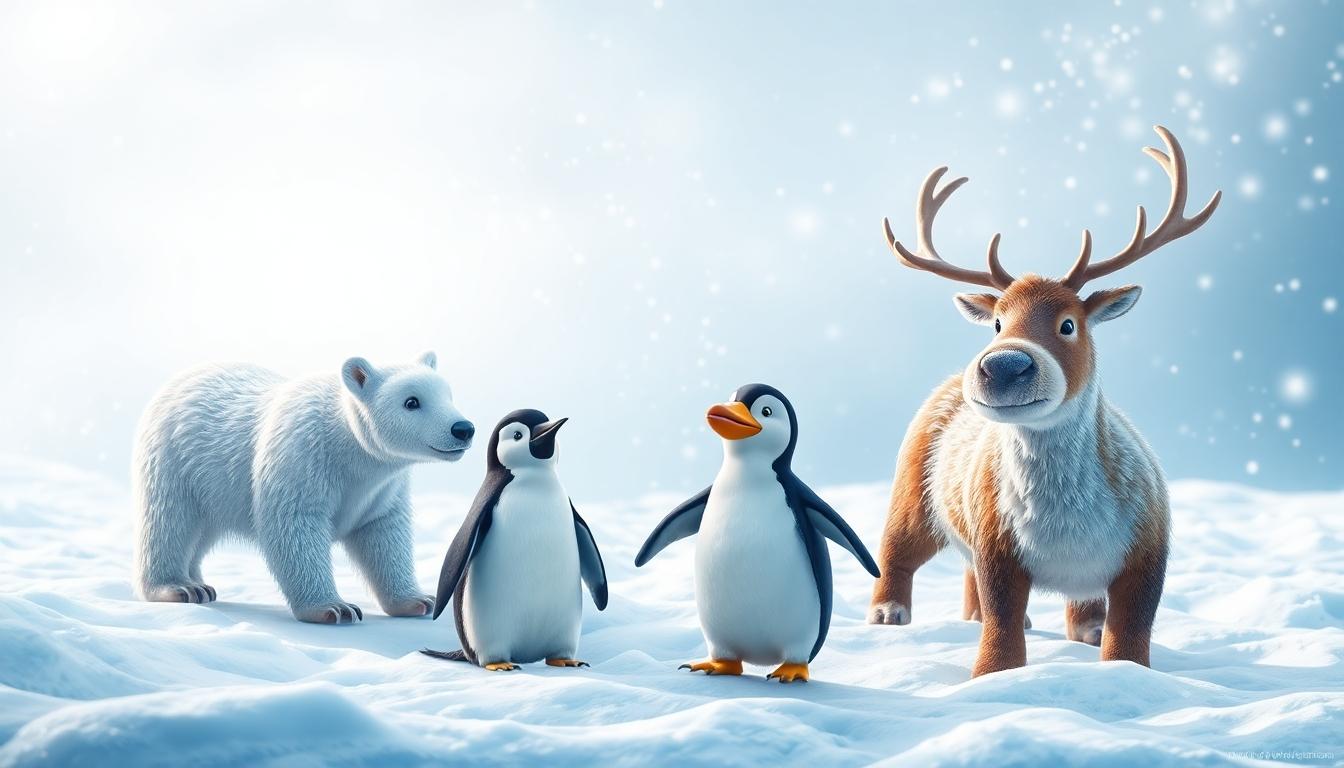
Winter brings out the playful side of our furry and feathered friends, making them perfect subjects for clever riddles. We’ve gathered the most entertaining animal-themed winter riddles that combine seasonal humor with wildlife facts. These puzzles not only provide laughs but also offer educational value about how animals adapt to the cold months.
Arctic Animals Take Center Stage
Arctic and cold-adapted animals dominate winter riddles, with these creatures naturally fitting into snowy scenarios. Polar bears, penguins, arctic foxes, and reindeer frequently appear in these brain teasers, showcasing their unique winter adaptations.
- Why do bears always get fired in the winter?
Answer: They get caught sleeping on the job!
- What’s a reindeer’s favorite coffee shop?
Answer: Starbucks!
- What happens when a moose feels cold?
Answer: They get moose bumps!
- Which arctic animal carries its house wherever it goes?
Answer: The snow-mobile polar bear!
Hibernation Humor
Many winter riddles play on the theme of hibernation, turning animals’ winter survival strategies into clever wordplay.
- What do you call a bear who refuses to hibernate?
Answer: A rebel without a paws!
- Why are hibernating bears bad at keeping secrets?
Answer: Because they always sleep-talk!
- How do forest rangers track sleeping bears?
Answer: They follow the snore-trails!
Classroom-Ready Animal Puzzles
Teachers frequently use winter animal riddles as educational tools, helping students learn about wildlife while having fun. These puzzles work wonderfully in classroom settings to teach about animal adaptations and habitats.
- I grow a thick white coat when winter comes, but I’m not a sheep. My ears stay tall while I hop through snow. What am I?
Answer: An arctic hare!
- I have antlers and pull a famous sleigh. My nose doesn’t glow, but my hooves know the way. What am I?
Answer: A reindeer!
- I waddle on ice but cannot fly, though I’m a bird with wings. In colonies I stand together to stay warm. What am I?
Answer: A penguin!
Wordplay With Winter Wildlife
Clever puns and homophones make winter animal riddles especially entertaining, creating memorable puzzles that children and adults alike enjoy.
- What do you call a snowman with a six-pack?
Answer: An abdominal snowman!
- Where do baby icebergs go for education?
Answer: Cub-ergarten!
- What did the wolf say when it was extremely cold?
Answer: “This weather is Casp-brrrrrrr!”
These animal-themed winter riddles serve dual purposes in entertainment and education. Resources like Teachers Pay Teachers and ABCmouse offer ready-to-use printables featuring these riddles, typically priced between $2.50 and $5.00. YouTube channels also provide free animated content that brings these riddles to life for younger audiences, making winter animal puzzles accessible to everyone looking for seasonal brain teasers.
How to Create Your Own Winter Riddles
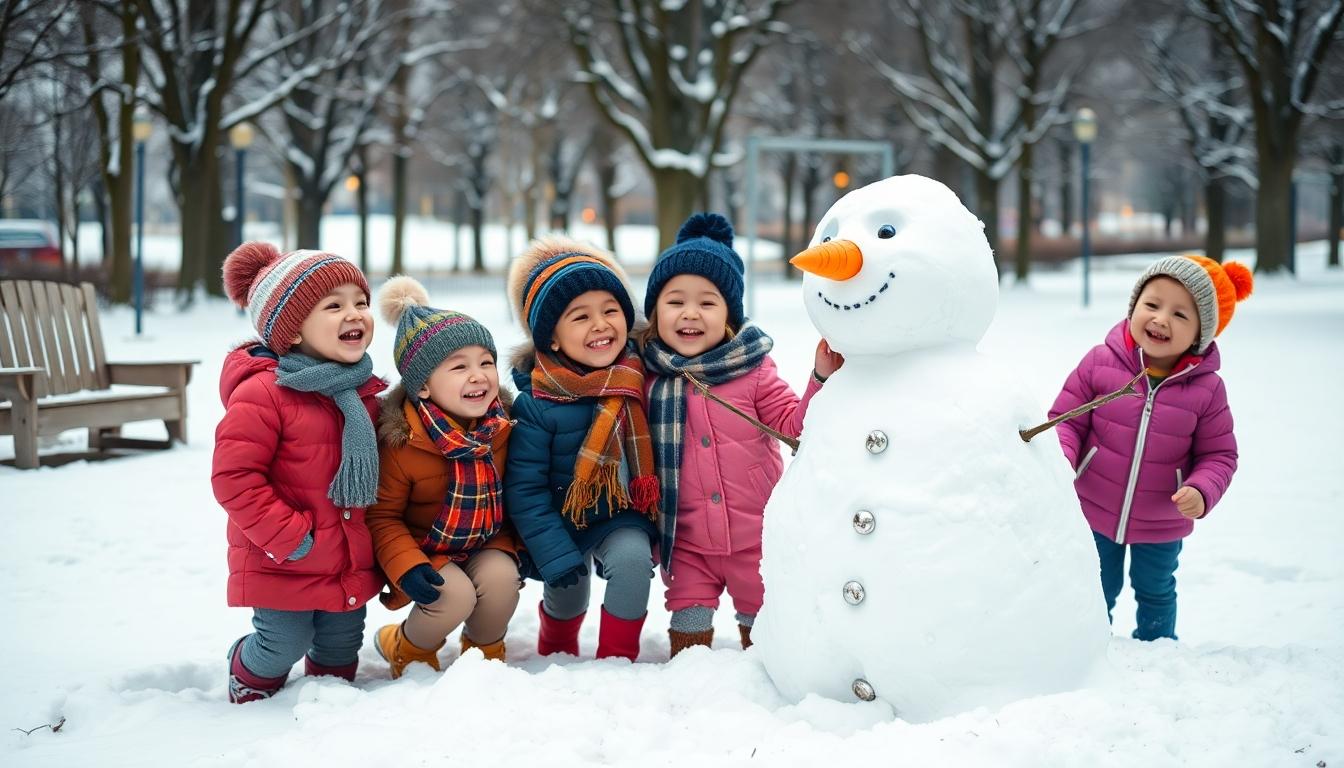
Creating your own winter riddles is a delightful way to engage family and friends during the colder months. We’ve gathered the best techniques to help you create clever winter-themed brain teasers that will challenge and entertain everyone around you.
Identify Key Winter Elements
Winter offers abundant inspiration for riddle creation. Start by focusing on distinctive seasonal objects like snowflakes, icicles, and snowmen that everyone recognizes. Activities such as sledding, ice skating, and building snow forts also make excellent riddle subjects. Natural phenomena including frost patterns, snowfall, and freezing temperatures provide rich material for creative wordplay.
Incorporate Simple Wordplay
Effective riddles often use clever language tricks that prompt listeners to think differently. Puns work wonderfully in winter riddles, such as playing with “frosted” cereal for “Frosted Flakes” connections. Homophones create captivating puzzles, like using the concept behind “What falls but never breaks?” (snow). Double meanings add complexity to your riddles, making them more challenging and satisfying to solve.
Structure With Rhyme and Rhythm
Riddles become more memorable when they follow distinctive patterns. Create rhythmic structures similar to “I have arms but no hands, a neck but no head” (a coat). Rhyming components make riddles stick in people’s minds and feel more polished. Short, punchy sentences often work better than lengthy descriptions when crafting winter brainteasers.
Add Surprising Twists
The best riddles include unexpected elements that challenge conventional thinking. Design contrasts that make listeners reconsider their assumptions, like “I’m not alive but need air” (fire). Personify winter objects by giving them human characteristics or actions. Misdirection serves as a powerful tool—hint at one answer while the actual solution is something completely different.
Test for Clarity and Solvability
Before sharing your riddle, ensure it leads clearly to one correct answer. Avoid overly obscure references that might frustrate your audience. Strike the right balance between challenge and solvability—too easy is boring, but too difficult becomes frustrating. Try your riddles on a test audience to gauge their effectiveness and make adjustments as needed.
Examples to Inspire Your Creativity
These proven winter riddles can inspire your own creations:
- “What is as cold as ice but weighs nothing?” (Answer: A snowflake)
- “I walk without legs, I’m cold as can be. I melt when it’s sunny.” (Answer: A snowman)
- “I draw on windows with patterns of white.” (Answer: Frost)
For educational settings, consider math-based winter riddles that combine logic with seasonal themes. Temperature contrasts, melting processes, and seasonal activities provide excellent frameworks for developing new and captivating winter brainteasers that will entertain all ages.
Winter Riddle Games: Beyond the Basic Question and Answer
We hope these winter riddles have sparked joy and mental stimulation during the frosty season! From classroom activities to family gatherings these brain teasers offer more than entertainment—they strengthen bonds and create lasting memories.
Whether you’re fascinated by scientific winter phenomena exploring animal adaptations or simply enjoying the playful wordplay these riddles celebrate everything magical about winter. They’re perfect conversation starters and ideal for breaking the ice at holiday parties.
Don’t forget to create your own winter riddles using our guide. The cold season provides endless inspiration for clever puzzles. So grab some hot cocoa challenge your loved ones with these frosty conundrums and watch how winter riddles transform ordinary moments into extraordinary winter fun!
Frequently Asked Questions
What are winter-themed riddles and why are they popular?
Winter-themed riddles are brain teasers that focus on elements of winter such as snow, ice, and holiday traditions. They’re popular because they offer a fun way to stimulate the mind during cold winter evenings while celebrating seasonal themes. These riddles appeal to all ages and provide entertainment during family gatherings, classroom activities, or just for personal enjoyment.
How can winter riddles benefit children in educational settings?
Winter riddles in classrooms help children develop critical thinking skills while reinforcing seasonal vocabulary. They make learning interactive and enjoyable, especially when incorporated into activities like bingo cards and scavenger hunts. These riddles offer teachers a creative way to engage students of different ages, from simple puzzles for elementary students to more complex brain teasers for middle schoolers.
Are there different types of winter-themed riddles?
Yes, winter riddles come in various types including general winter riddles, snow-themed puzzles, holiday riddles (Christmas and New Year’s), winter sports brain teasers, and scientific riddles about cold weather phenomena. There are also riddles focusing on winter animals and their adaptations. This variety ensures there’s something for everyone, regardless of specific interests.
How can I create my own winter riddles?
To create winter riddles, identify key seasonal elements (snow, ice, etc.), incorporate clever wordplay or puns, structure with rhyme and rhythm if desired, add surprising twists, and test for clarity. Start with simple concepts like snowmen or icicles, then build your riddle around their unique characteristics. Practice by writing several versions and testing them on friends and family.
Can winter riddles teach us about science?
Absolutely! Scientific winter riddles explain fascinating cold weather phenomena like the Mpemba effect (how hot water can freeze faster than cold), forest microclimates, snow patterns, and glacier formation. These riddles not only entertain but also educate about natural processes, making them valuable tools for learning about winter science in an engaging way.
What makes a good winter animal riddle?
Good winter animal riddles combine accurate facts about Arctic and cold-adapted wildlife with clever wordplay or puns. They highlight unique adaptations like hibernation, thick fur, or blubber that help animals survive winter. The best ones are both entertaining and educational, offering insights into animal behaviors while providing a fun mental challenge.
How can winter riddles enhance family gatherings?
Winter riddles add entertainment to family gatherings by creating moments of friendly competition and shared laughter. They’re perfect for breaking the ice at holiday parties, filling time during travel, or adding fun to dinner conversations. For family gatherings, choose riddles appropriate for all ages present and consider offering small prizes to make it more engaging.
Where can I find winter riddles for different age groups?
The article provides winter riddles for all age groups, from easy ones for young children to challenging ones for adults. Many educational websites, riddle books, and seasonal activity guides also offer age-appropriate winter riddles. Teachers’ resource platforms often have downloadable winter riddle collections specifically designed for different grade levels.







